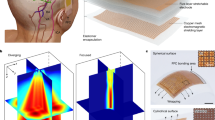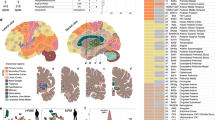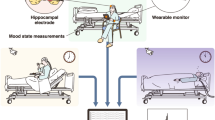Abstract
THE blood-flow through the rostral and parietal parts of the heparinized cat's brain has been measured by cannulating the sagittal sinus. This flow has been correlated with the systemic blood pressure and the electroencephalogram.
This is a preview of subscription content, access via your institution
Access options
Subscribe to this journal
Receive 51 print issues and online access
$199.00 per year
only $3.90 per issue
Buy this article
- Purchase on Springer Link
- Instant access to full article PDF
Prices may be subject to local taxes which are calculated during checkout
Similar content being viewed by others
References
Shenkin, H. A., Harmel, M. H., and Kety, S. S., Arch. Neurol. Psychiat., 60, 240 (1948).
Darrow, C. W., Green, J. R., Davis, E. W., and Garol, H. W., J. Neurophysiol., 7, 217 (1944). Jasper, H. H., and Erickson, T. C., J. Neurophysiol., 4, 333 (1941). Ingvar, D. H., Acta physiol. scand., 33, 169 (1955).
Author information
Authors and Affiliations
Rights and permissions
About this article
Cite this article
INGVAR, D., SÖDERBERG, U. A Direct Method for the Measurement of Cerebral Blood-flow. Nature 177, 339–340 (1956). https://doi.org/10.1038/177339b0
Issue Date:
DOI: https://doi.org/10.1038/177339b0
This article is cited by
-
Insights from Neuroenergetics into the Interpretation of Functional Neuroimaging: An Alternative Empirical Model for Studying the Brain's Support of Behavior
Journal of Cerebral Blood Flow & Metabolism (2014)
-
The effect of LSD-25 upon the cerebral blood flow and EEG in cats
Experientia (1956)
-
Chlorpromazin und Spastizit�t
Archiv f�r Psychiatrie und Nervenkrankheiten Vereinigt mit Zeitschrift f�r die Gesamte Neurologie und Psychiatrie (1956)
Comments
By submitting a comment you agree to abide by our Terms and Community Guidelines. If you find something abusive or that does not comply with our terms or guidelines please flag it as inappropriate.



